Asian cuisine is renowned for its variety and depth of flavors. One key element contributing to its unique taste is the use of sauces. With their distinct ingredients and preparation methods, these sauces can transform a simple dish into a complex and flavorful creation.
The “Asian Sauces Market,” a testament to the global popularity of Asian cuisine,
The sauce and condiments market is valued at USD 146.60 bn in 2024. With a projected value of $22 billion by 2032, it’s clear that the world is embracing the diverse range of sauces that Asian cuisine has to offer.
In this article, we’ll explore 20 of the best Asian sauces, each with its own unique profile and uses. From sweet and tangy to hot and spicy, there’s a sauce for every dish. Soy sauce, Sriracha, and oyster sauce are just a few examples of versatile condiments that can elevate your cooking. Let’s dive in.
1. Soy Sauce
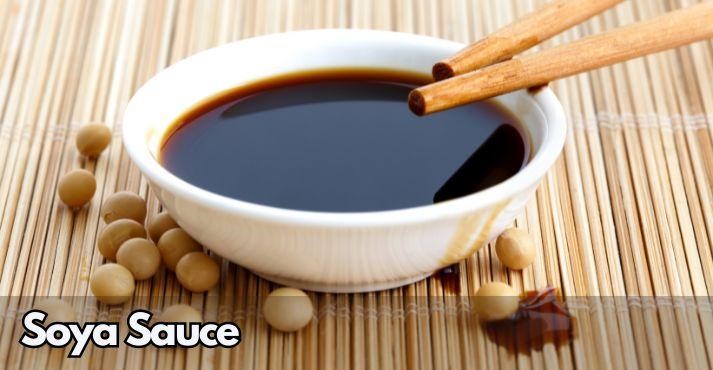
When we talk about different types of Asian Sauces, Soy sauce stands out. It is a critical ingredient in many Asian cuisines, mainly Chinese and Japanese.
Soy sauce is crafted through the fermentation of soybeans and wheat, leading to a complex mix of flavors. There are several types of soy sauce, each with unique characteristics.
Light soy sauce, which is saltier and thinner, is perfect for stir-fries and marinades. Dark soy sauce, on the other hand, is thicker and has a subtle sweetness, making it ideal for braised dishes and stews.
Tamari, another variety, is often gluten-free. Soy sauce, with its deep umami flavor, adds depth to various dishes, from sushi to ramen.
2. Fish Sauce

Fish sauce is a crucial ingredient in Southeast Asian cuisine, playing a prominent role in Thai and Vietnamese cooking. It’s produced through the fermentation of fish, typically anchovies, with salt, resulting in a sauce with a strong aroma and a deep umami flavor.
This distinct combination gives the fish sauce its unique character. It may be intense at first but becomes an essential flavor enhancer in many dishes.
In Thai cuisine, fish sauce balances the sweet, sour, and spicy elements in dishes like Pad Thai and green curry. It’s also a key ingredient in Thai dipping sauces, providing a savory depth that complements fresh vegetables and grilled meats.
In Vietnamese cuisine, fish sauce is indispensable for creating the rich broth in Pho, a famous noodle soup, and is a common component in nuoc cham, a versatile dipping sauce.
Despite its strong scent, fish sauce adds a unique depth to food, making it necessary among different Southeast Asian sauces.
3. Oyster Sauce
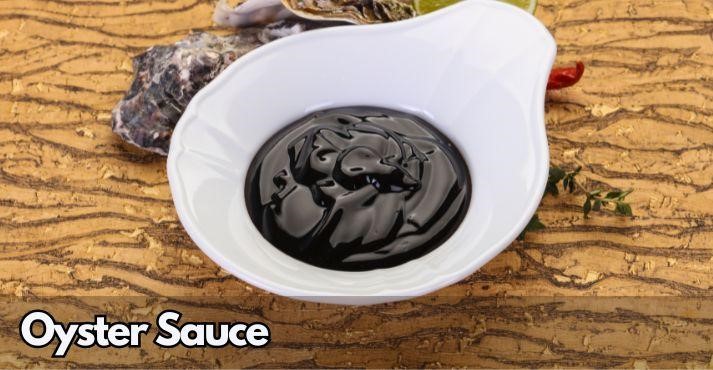
Oyster sauce is a widely used Asian condiment in Chinese cuisine. It is appreciated for its appropriate balance of sweet and savory flavors. This thick sauce is made from a base of oyster extracts, soy sauce, and sugar, which combine to create a rich and complex taste.
Oyster sauce’s consistency is slightly syrupy, allowing it to coat dishes with a glossy sheen that enhances both the appearance and flavor of the food.
In Chinese cooking, oyster sauce is a key ingredient in many stir-fries. Its savory richness enhances vegetables and meats alike. Dishes like beef with broccoli, chicken with mushrooms, and stir-fried greens often incorporate oyster sauce to bring out their best flavors.
Its umami profile also makes it an excellent choice for marinades, infusing meats with a deep and satisfying taste.
Beyond stir-fries, oyster sauce is a famous dipping sauce for appetizers like spring rolls and dumplings, providing a sweet and savory accompaniment. Given that it has shellfish components, you must know whether it’s an allergen in your case or not before use.
4. Hoisin Sauce
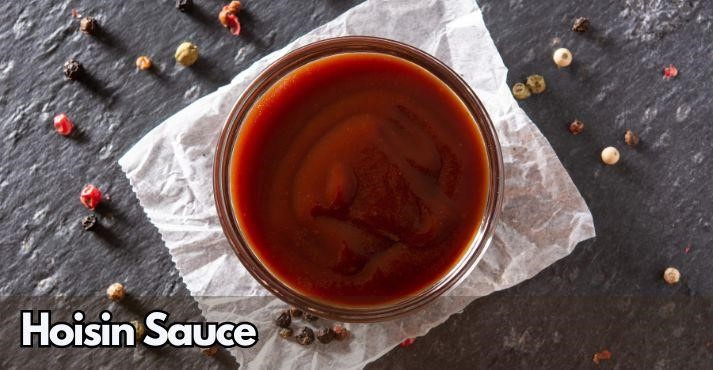
Hoisin sauce, often called Chinese barbecue sauce, is a robust and flavorful condiment known for its thick, sweet, and tangy profile. It is a sweet Asian sauce made from soybeans, garlic, chili, and various spices.
Hoisin sauce has a rich, complex flavor that brings a distinctive touch to various dishes. Its deep brown color and glossy consistency make it an attractive addition to many culinary creations.
In Cantonese cooking, hoisin sauce plays a key role in traditional dishes like Peking duck and Mu Shu pork, along with other pork dishes. Its sweet and savory notes complement the roasted meats and crunchy vegetables.
Its versatility allows it to be used as a marinade, giving meat dishes a sweet glaze when grilled or roasted. It’s also famous for dipping sauces, perfect for accompanying spring rolls or potstickers.
Beyond Cantonese cuisine, hoisin sauce is a popular ingredient in other Asian dishes and even fusion recipes. It offers a quick way to add an authentic touch to home-cooked meals.
Its unique balance of flavors makes it a valuable addition to any pantry, especially for those who enjoy exploring different culinary traditions.
5. Sriracha
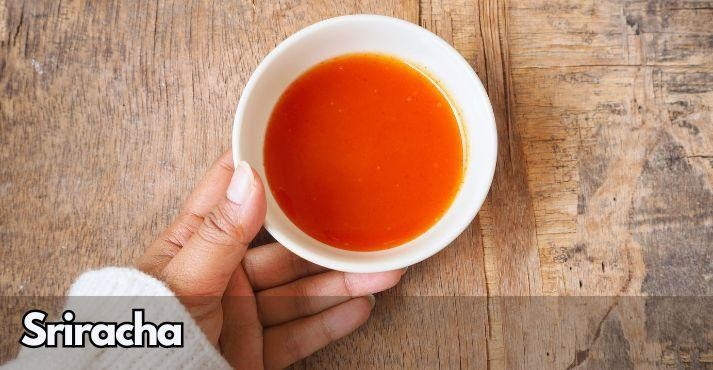
When we mention the top Asian sauces, Sriracha is always there. Sriracha is a beloved Thai-style hot sauce known for its spicy-sweet flavor profile and vibrant red color.
Made from a combination of chili peppers, garlic, vinegar, and sugar, this famous sweet Asian sauce has a distinctive taste that balances heat with a hint of sweetness.
Sriracha’s bold and tangy flavor and striking hue have made it a favorite among hot sauce enthusiasts and culinary adventurers.
In Thai cuisine, Sriracha is often used as a dipping sauce for seafood and as a topping for rice and noodle dishes.
Its heat can vary depending on the brand, but it’s typically mild enough for a wide range of palates, making it an approachable choice for those who enjoy spicy foods without overwhelming heat.
Beyond Thai cuisine, Sriracha has found its way into various dishes across the globe, from adding a zesty kick to scrambled eggs and burgers to soups and stews. It is undoubtedly one of the best Asian sauces.
The versatility of Sriracha has contributed to its popularity, turning it into a household name worldwide. It is one the most sought-after types of Asian sauce by food importers, to be sourced for the West.
6. Kecap Manis (Indonesian Sweet Soy Sauce)
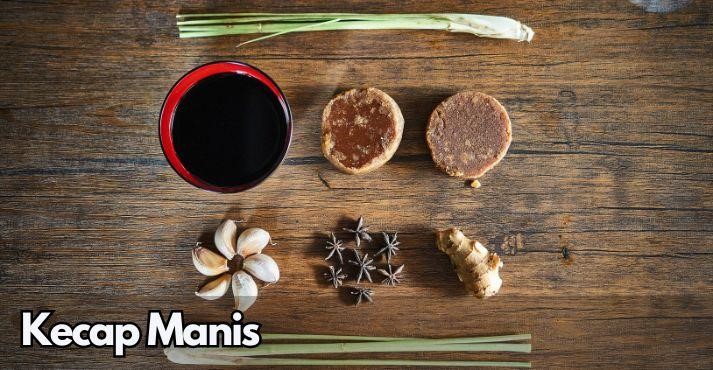
Among the different sauces in Southeast Asia, Kecap Manis is a unique soy sauce from Indonesia and Malaysia, known for its sweet and savory flavor profile.
This sauce has a thicker consistency than regular soy sauce, thanks to the addition of palm sugar or molasses, giving it a rich and caramelized taste. Its deep, syrupy texture makes it an excellent addition to various dishes.
In Indonesian and Malaysian cuisine, Kecap Manis is a popular ingredient in satay. It adds a sweet glaze to skewered meats and develops the overall flavor.
It’s also used in marinades, adding subtle sweetness and depth to grilled meats and seafood. Kecap Manis is a common component in noodle dishes and stir-fries, providing a balance of sweetness and umami.
7. Sambal
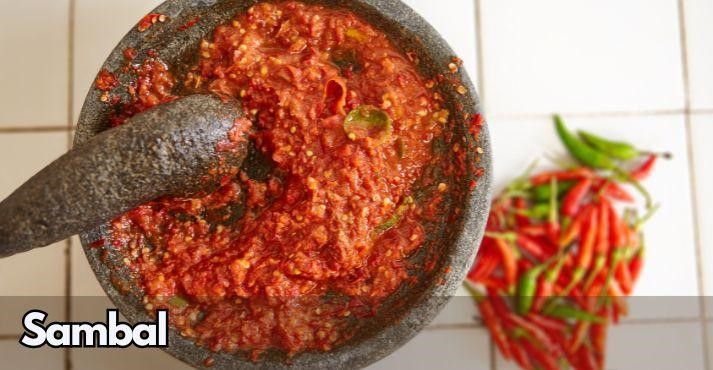
Sambal is a fiery chili paste staple in Indonesian and Malaysian cuisine. Known for its bold heat, Sambal is made from various chili peppers, often combined with garlic, shallots, lime juice, and other aromatic ingredients.
This versatile sauce comes in different types, each offering a unique flavor profile and heat level, depending on the region and specific recipe.
In Indonesian and Malaysian cooking, Sambal is a multi-purpose condiment that adds a spicy kick to a wide range of dishes.
Sambal is often used as a dipping sauce for snacks like fried chicken or spring rolls or as a condiment to accompany rice and other popular Asian foods. Beyond its role as a topping, It is also used as a flavor enhancer in soups, stews, and stir-fries.
For those who crave bold and spicy flavors, Sambal is a must-have in the kitchen. Its intense heat and complex taste excite meals, making it a beloved addition to many traditional and contemporary dishes and one of the best Asian sauces.
8. Teriyaki Sauce
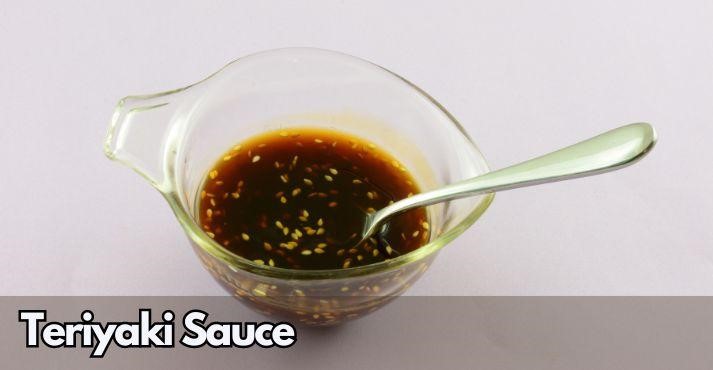
Teriyaki sauce is a famous Japanese sauce celebrated for its sweet and savory flavor. Made from a base of soy sauce, sugar, and mirin, teriyaki has a thick and glossy texture that adds a rich sheen to dishes.
This unique combination of ingredients gives teriyaki its signature balance of sweetness and umami, making it a favorite in Japanese cooking among different Asian sauces.
Traditionally, teriyaki sauce is used as a marinade or glaze for grilled meats and seafood, providing a caramelized, flavorful, and visually appealing finish.
It’s commonly applied to dishes like teriyaki chicken, beef, or salmon, enhancing the dish’s taste and appearance. It is particularly loved with seafood. The sauce’s versatility makes it popular for stir-fries and bento box meals.
Teriyaki’s widespread appeal has made it a staple in many Japanese dishes, and its adaptability has allowed it to become a favorite in international cuisine
9. Rendang Sauce
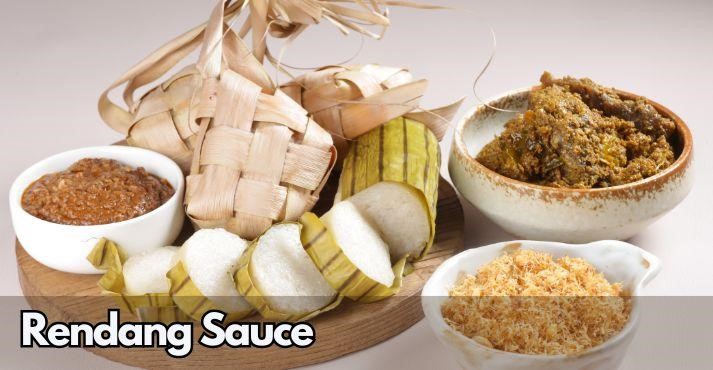
Rendang sauce, another addition to the best Asian sauces list, is a profoundly aromatic and complex sauce that plays a central role in Malaysian and Indonesian cuisine, especially in the dish Rendang.
This flavorful sauce is created from a rich blend of spices, including lemongrass, galangal, turmeric, and chili peppers, mixed with coconut milk. The combination of these ingredients results in a thick, fragrant sauce with a depth of flavor that is both spicy and earthy.
Rendang sauce is traditionally used in slow-cooked dishes, where meats like beef, chicken, or lamb are simmered for hours, allowing the flavors to meld and intensify.
The slow-cooking process with coconut milk creates a tender and rich dish, with the sauce clinging to the meat and infusing it with its complex spices.
This sauce is the basis of traditional Rendang, known for its hearty flavor. Its unique blend of spices and coconut milk makes it a favorite for those who enjoy rich, deeply satisfying dishes that celebrate the vibrant flavors of Southeast Asia.
10. Black Bean Sauce
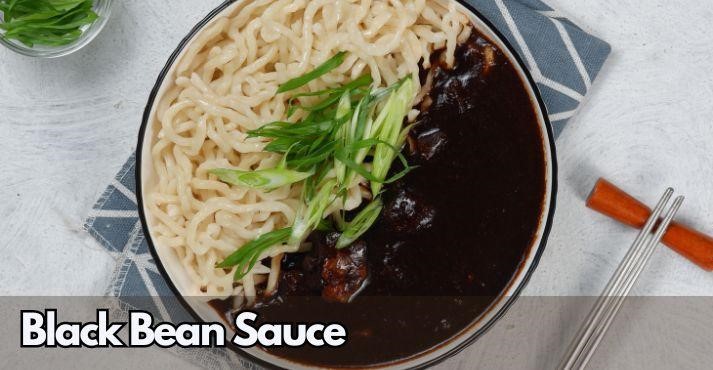
Black bean sauce is a savory and spicy Chinese cooking staple known for its deep umami flavor and aroma. This sauce is made from fermented black beans, garlic, soy sauce, and other seasonings, creating a complex and flavorful base for various dishes.
The fermentation process gives the black beans a salty and slightly tangy edge, contributing to the sauce’s distinct taste and making it stand out amongst different Asian condiments.
Black bean sauce is a critical ingredient in many popular dishes in Chinese cuisine. It’s commonly used in stir-fries, adding depth and richness to vegetables, meats, and tofu.
Dishes like Mapo Tofu and Black Bean Chicken are classic examples of the sauce’s ability to transform simple ingredients into bold, flavorful meals. Additionally, black bean sauce is often used in braised dishes, infusing the food with a savory complexity that intensifies as it cooks.
11. Korean Gochujang
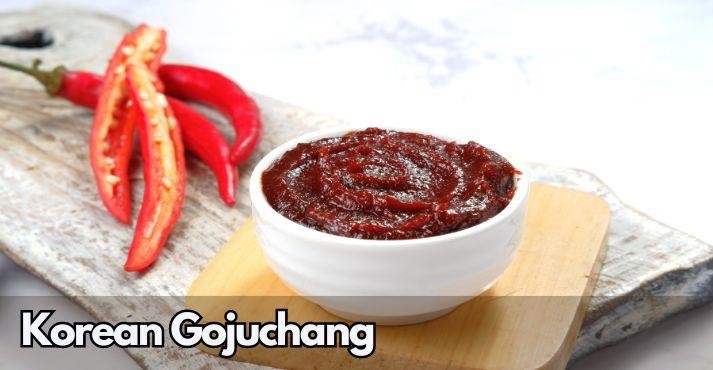
Gochujang is a quintessential Korean fermented chili paste known for its sweet, spicy, and savory flavor.
Made from a blend of chili peppers, glutinous rice, and fermented soybeans, gochujang has a thick and rich texture that adds depth to various dishes. Its unique flavor combines heat, sweetness, and umami, creating a versatile sauce that elevates traditional Korean cuisine.
In Korean cooking, gochujang is a critical ingredient in many beloved dishes. It adds heat and complexity to Bibimbap, the iconic Korean rice bowl, and gives Tteokbokki, a spicy rice cake dish, its signature kick.
Beyond these, gochujang is often found in marinades, stews, and dipping sauces, making it a staple in Korean households amongst different types of Asian sauces. Its bold flavor and versatility make it a favorite for those who appreciate a balance of sweet and spicy food.
12. Nam Jim
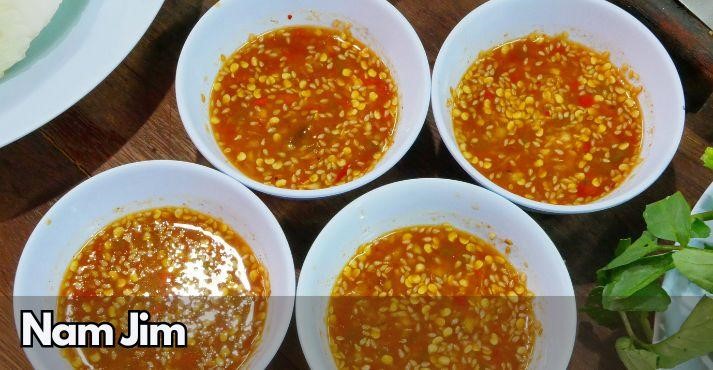
Nam Jim is a famous Thai dipping sauce renowned for its spicy and tangy flavor. The name “Nam Jim” translates to “dipping sauce,” but there’s nothing generic about this vibrant, bold, and sweet Asian sauce.
It’s typically made from a blend of lime juice, fish sauce, chili peppers, garlic, and sugar, resulting in a bold and zesty sauce.
This dipping sauce commonly accompanies various Thai dishes, especially grilled or fried foods.
The balance of heat from the chili peppers, the tanginess of lime juice, the saltiness from fish sauce, and the sweetness from sugar creates a balanced flavor profile that improves the taste of the dishes it accompanies.
Nam Jim is often served with grilled chicken, seafood, or fried spring rolls, and it provides a lively flavor.
With its vivid and aromatic taste, Nam Jim has become a favorite for those who enjoy Thai cuisine. It offers a simple yet dynamic way to bring life to a wide range of foods.
13. Kuah Kacang
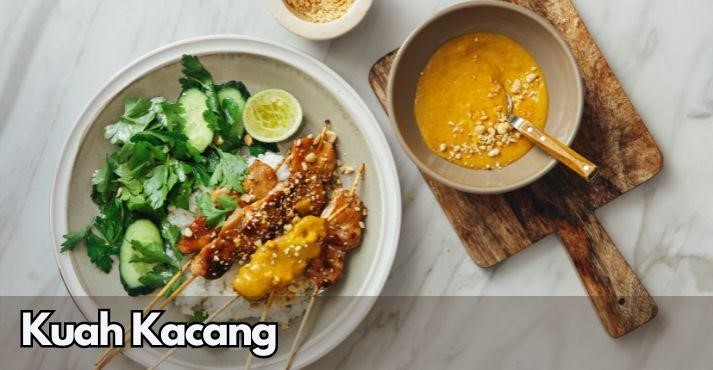
Kuah Kacang, one of the best Asian sauces, is a beloved peanut sauce in Malaysian cuisine. It is often served alongside satay, a popular street food consisting of skewered and grilled meats.
This sauce is made from ground peanuts, coconut milk, chili paste, and various spices, resulting in a rich and creamy texture with a distinctly nutty flavor.
Combining sweet and savory elements creates a delightful balance that complements various dishes.
Kuah Kacang is commonly used as a dipping sauce for satay, providing a creamy and flavorful accompaniment to the grilled meats. It’s also a popular pairing with rice cakes and other grilled or fried foods, enhancing their taste with its robust peanut flavor.
The addition of coconut milk lends a smooth and velvety quality to the sauce, while the chili paste adds a subtle heat. Together, they create a complex and enjoyable flavor profile that makes it stand out as a top Asian condiment.
14. Yuzu Kosho

Yuzu Kosho is a distinctive Japanese Asian condiment made from the zest of yuzu citrus, chili peppers, and salt. This combination creates a unique flavor profile that’s both citrusy and spicy, delivering a bold and aromatic taste.
The yuzu zest contributes a bright, tangy essence, while the chili peppers add a sharp kick of heat. This intriguing blend makes Yuzu Kosho popular for those seeking a refreshing yet fiery seasoning.
In Japanese cuisine, Yuzu Kosho enhances the flavors of grilled meats, seafood, and vegetables, adding a lively zest to dishes. It also finds its way into marinades, dressings, and dipping sauces, offering a unique twist to traditional recipes.
Its versatility makes it an excellent addition to both Japanese and fusion dishes, where it can lend a burst of citrusy heat
15. Belacan Sauce
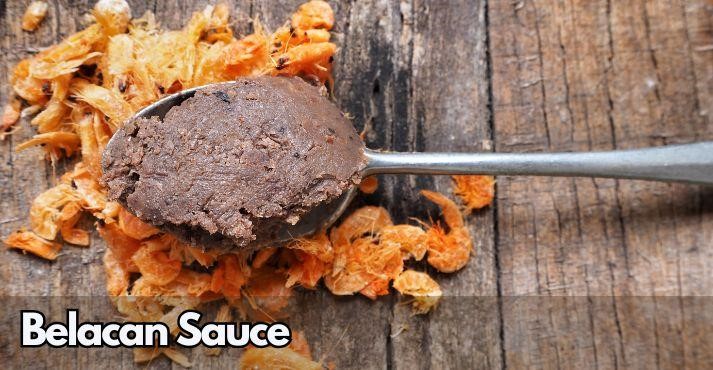
The last of the best Asian sauces that we will discuss is Belacan Sauce. It is a robust and savory shrimp paste sauce central to Malaysian and Indonesian cuisines.
It’s crafted from fermented shrimp paste, known as belacan, combined with chili peppers and other aromatic ingredients like garlic and shallots. This combination produces a strong umami flavor and an intense aroma that adds depth to various dishes.
Belacan Sauce is typically used as a flavor enhancer in Malaysian dishes such as Nasi Lemak, contributing to the dish’s signature savory note. It is also a key ingredient in Sambal Belacan, a popular chili-based condiment.
Its robust flavor makes it a favorite addition to stir-fries, soups, and curries, infusing them with a rich and earthy essence.
Beyond its role in cooked dishes, Belacan Sauce can also be used as a dipping sauce, offering a savory and slightly spicy accompaniment to grilled meats and seafood.
Despite its intense aroma, this sauce is revered for its ability to bring a burst of umami to food, making it a staple in Malaysian and Indonesian kitchens.
16. Sweet Soy Sauce
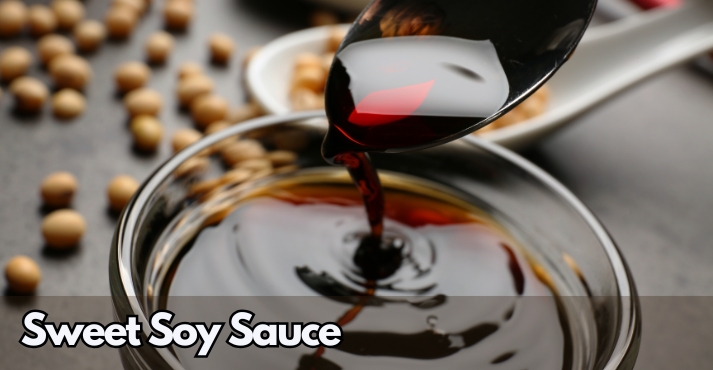
Known for its rich, dark, and syrupy consistency, this sauce is an essential ingredient for those seeking to recreate authentic Thai flavors. Unlike regular soy sauce, sweet soy sauce is sweeter with a mild caramel-like taste that balances its salty notes. This makes it perfect for dishes where a harmonious blend of sweet and savory is desired.
One of its most popular applications is in stir-fried dishes such as Pad See Ew, a Thai stir-fried noodle dish, where its sweetness complements the smoky flavor imparted by high-heat cooking. It also works well as a marinade base for grilled meats, lending both color and depth. This sauce pairs beautifully with chicken, pork, and seafood.
As a dipping sauce, sweet soy sauce by Kwong Hung Seng can enhance the flavors of steamed vegetables, dumplings, or spring rolls. To unlock its full potential, mix it with minced garlic and chili for a flavorful condiment. For home cooks and culinary enthusiasts alike, this sauce is an indispensable addition to your pantry, offering a quick and authentic way to infuse Thai-inspired dishes with a restaurant-quality finish.
17. Soy Bean Paste
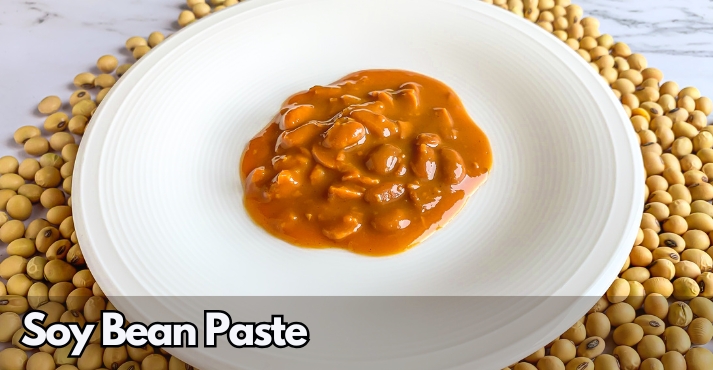
Soy bean paste is a fermented condiment that embodies the essence of umami. Used across various Asian cuisines, it is particularly prominent in Thai, Chinese, and Korean cooking. Its flavor profile is savory and complex, with a slightly salty and earthy aftertaste that makes it an excellent base for many dishes.
In Thai cuisine, soy bean paste, or “tao jiew,” is often used in stir-fries, soups, and dipping sauces. For instance, a popular Thai dish, Pla Rad Prik (fried fish with chili sauce), features soy bean paste to create a rich and tangy topping. In Korean cooking, its equivalent, “doenjang,” is a primary ingredient in dishes like doenjang-jjigae (soybean paste stew), where it contributes a comforting depth of flavor.
Soy bean paste’s thick texture makes it an ideal substitute for soy sauce in recipes requiring a more concentrated umami punch. Additionally, it serves as a marinade ingredient for meats, imparting a savory flavor that intensifies during cooking. Its fermentation process gives it a slight tang, which can also enhance salad dressings or dipping sauces. For optimal use, store it in an airtight container to preserve its distinctive flavor and prevent moisture loss.
18. Seasoning Sauce
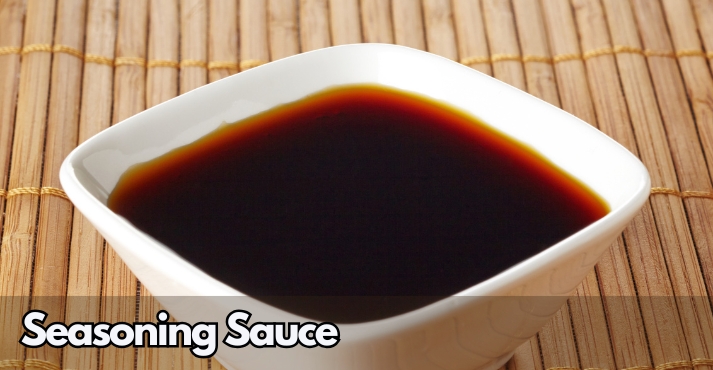
Seasoning sauce is a versatile all-purpose liquid condiment that adds a delicate balance of flavors to a wide range of dishes. Widely used in Southeast Asian cuisine, this sauce offers a milder and slightly sweeter alternative to soy sauce, making it a favorite among home cooks and chefs alike.
The most notable characteristic of seasoning sauce is its ability to enhance flavors without overpowering the dish. Popular brands like Maggi or Golden Mountain Seasoning Sauce are common in stir-fries, such as Thai-style fried rice or Pad Kra Pao (stir-fried basil chicken). Its slightly sweet and umami-rich taste makes it ideal for seasoning meat, poultry, or seafood before grilling or stir-frying.
Unlike soy sauce, which can be too salty in some recipes, seasoning sauce blends seamlessly into soups and stews. It can also be drizzled over finished dishes as a finishing touch, providing a glossy sheen and a savory depth. For busy kitchens, seasoning sauce is a quick way to add complexity to dishes with minimal effort. Keep it on hand as your go-to solution for elevating stir-fries, noodles, marinades, or even fried eggs with a deliciously nuanced flavor.
19. Sweet Chili Sauce
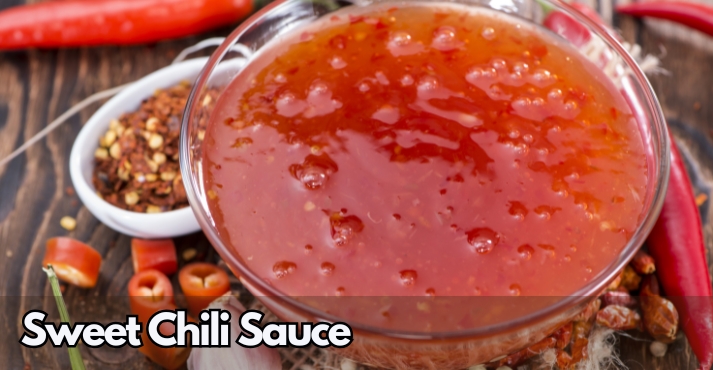
Sweet chili sauce is a beloved Asian condiment, celebrated for its perfect balance of sweetness and mild heat. Originating from Thailand, this sauce is incredibly versatile, making it a must-have in every kitchen.
The beauty of sweet chili sauce lies in its ability to serve as both a dipping sauce and a cooking ingredient. It pairs beautifully with fried foods like spring rolls, wontons, and chicken wings, offering a tangy, sweet contrast to crispy textures. For those who enjoy grilled or roasted meats, sweet chili sauce works wonderfully as a glaze, giving dishes a caramelized, sticky finish when cooked.
In addition to its traditional uses, this sauce can be creatively incorporated into non-Asian dishes. For instance, it can serve as a base for pizza, a drizzle over roasted vegetables, or a component in salad dressings. Its mild spiciness makes it appealing to those who prefer a less intense heat level.
To elevate its flavor further, combine it with lime juice, fish sauce, or fresh herbs like cilantro. Its long shelf life and multi-purpose nature make it an essential addition to your pantry, ensuring that any dish can have an extra kick of sweet and spicy flavor.
20. Sweet Plum Sauce
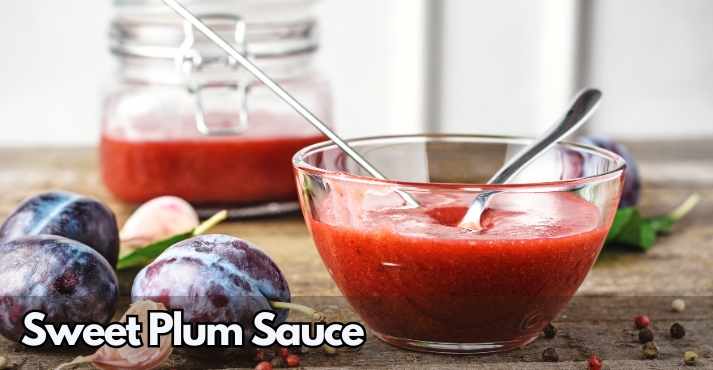
Sweet plum sauce is a fruity and tangy condiment commonly used in Chinese and other Asian cuisines. Its unique flavor, derived from ripe plums, sugar, vinegar, and a touch of spice, makes it an indispensable ingredient for adding depth to savory and sweet dishes alike.
This sauce is most famously served as a dipping sauce for dishes like roasted Peking duck, spring rolls, and fried wontons. Its tangy-sweet profile beautifully complements rich, fatty meats, cutting through their heaviness and enhancing the overall taste. Beyond dipping, sweet plum sauce can be used as a glaze for pork ribs, chicken wings, or roasted vegetables, creating a caramelized exterior with complex flavors.
Sweet plum sauce also works as a secret ingredient in stir-fries, providing a subtle fruity sweetness that balances out salty and savory elements. For a creative twist, incorporate it into salad dressings, sandwiches, or even as a spread for wraps. Its versatility extends to fusion cuisines, where it can be paired with cheese, crackers, or grilled seafood.
Easy to store and incredibly adaptable, sweet plum sauce is a pantry essential for those looking to bring a balance of sweet, sour, and tangy flavors to their culinary creations.
Best Asian Sauces (FAQs)
Which Korean Sauce Is Best?
The best Korean sauce depends on preference, but gochujang is highly regarded for its versatility and unique flavor profile. It combines sweetness, spiciness, and umami, making it a popular choice for Korean cuisine.
Which Chinese Sauce Is Best?
In Chinese cuisine, soy sauce is a staple due to its versatility and rich umami flavor. Oyster and black bean sauce are also standard, each with distinct characteristics.
Which Malaysian Sauce Is Best?
Sambal sauce is one of Malaysia’s best sauces, known for its spicy and tangy flavor. Kuah Kacang is a creamy peanut sauce widely used with satay and other grilled dishes.
Conclusion
Asian sauces are a cornerstone of many culinary traditions, providing diverse flavors that can transform ordinary meals into something extraordinary.
Whether you’re a fan of the umami-rich depth of soy sauce or the fiery heat of Sriracha, the best Asian sauces offer an array of tastes and textures that cater to every palate.
Among the many types of Asian sauces, soy sauce stands out for its versatility. It adds umami to everything from sushi to stir-fries.
With its spicy-sweet profile, Sriracha is a popular Asian condiment for those who crave heat. Meanwhile, Kuah Kacang, a creamy peanut sauce, is a staple in Malaysian cuisine, often served with satay.
By integrating these and other types of the best Asian sauces into your kitchen, you can explore new flavors and create delicious, culturally inspired meals.





























